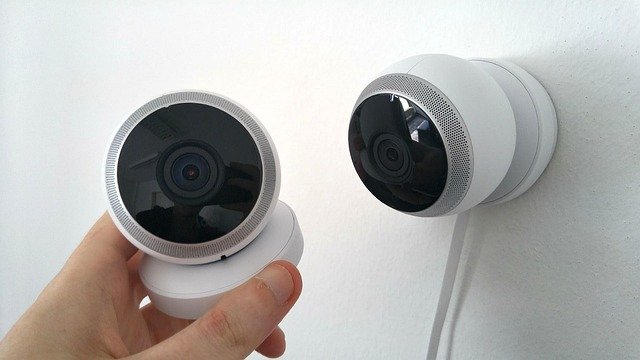No-Drill Electric Curtains: Smart control, zero tools
Electric curtains have evolved beyond bulky installations and professional setups. Today's no-drill motorized systems offer renters and homeowners a hassle-free way to automate window treatments without damaging walls or requiring tools. These smart solutions combine convenience, flexibility, and modern technology to transform how you manage light and privacy in any living space.

Motorized curtain systems have become increasingly accessible, especially for those who want automation without permanent modifications. No-drill electric curtains use innovative mounting techniques that eliminate the need for screws, anchors, or drilling into walls. This makes them ideal for rental properties, temporary living situations, or anyone who prefers a reversible installation. The technology behind these systems has matured significantly, offering reliable performance with minimal setup effort.
Remote-controlled curtains for renters: install, sync, save
Renters face unique challenges when upgrading their living spaces, particularly with window treatments. Traditional motorized curtain systems require drilling and permanent fixtures that violate most lease agreements. Remote-controlled no-drill curtains solve this problem by using tension rods, adhesive mounts, or snap-in brackets that leave walls intact. Installation typically takes 15 to 30 minutes without any tools beyond what comes in the kit. Most systems connect via Bluetooth or Wi-Fi, allowing control through smartphone apps, voice assistants like Alexa or Google Assistant, or dedicated remotes. Syncing these devices usually involves downloading an app, powering on the motor, and following simple pairing instructions. Beyond convenience, automated curtains can reduce energy costs by optimizing natural light and insulation, potentially saving 10 to 25 percent on heating and cooling expenses depending on climate and window exposure.
Motorized no-drill curtain systems: how snap-in mounts work
The engineering behind no-drill mounting systems relies on several proven methods. Snap-in brackets use spring-loaded tension between two surfaces, typically fitting inside window frames or between walls. These brackets grip firmly without adhesives or hardware, supporting motors and fabric through distributed pressure points. Adhesive-backed mounting plates offer another option, using industrial-strength tape designed to hold several pounds while remaining removable with heat or special solvents. Tension rod systems extend to fit window widths, with motorized units attaching via clips or integrated housings. The motors themselves are compact, often weighing less than two pounds, and connect to the curtain track through magnetic or clip-based mechanisms. Quality systems include safety features like obstacle detection and automatic stopping to prevent damage or injury. The modular design allows users to remove and reinstall the entire setup when moving, making it a truly portable solution.
Renter-friendly power options: battery, USB, or solar rails
Power supply flexibility distinguishes modern no-drill curtain systems from their predecessors. Battery-powered motors typically use rechargeable lithium-ion packs that last two to six months per charge, depending on usage frequency and curtain weight. USB-rechargeable options provide convenience for those near outlets, with some models featuring pass-through charging that allows operation while plugged in. Solar-powered rails incorporate photovoltaic strips along the track, harvesting ambient light to maintain battery charge indefinitely in well-lit rooms. This option works best in spaces with consistent natural light exposure. Some advanced systems offer hybrid power configurations, combining solar panels with battery backup for reliable operation regardless of lighting conditions. Wireless operation eliminates unsightly cords and maintains the clean aesthetic that makes these systems appealing. Power consumption remains minimal, with most motors drawing only 3 to 8 watts during operation and entering low-power standby modes when idle.
Cost breakdown: affordable kits vs pro tracks
Understanding the financial investment helps in choosing the right system for your needs. Entry-level no-drill motorized curtain kits start around 80 to 150 dollars for basic single-window setups with simple remote control. Mid-range systems with smart home integration, app control, and better motors typically range from 200 to 400 dollars. Professional-grade tracks with advanced features like voice control, scheduling, and premium materials can cost 500 to 1,200 dollars or more for larger windows. The price difference reflects motor quality, track materials, control sophistication, and weight capacity. DIY installation saves 100 to 300 dollars compared to professional setup, though some complex configurations benefit from expert assistance.
| System Type | Provider Examples | Key Features | Cost Estimation |
|---|---|---|---|
| Basic Kit | SwitchBot, Yoolax | Remote control, battery power, single window | 80-150 dollars |
| Smart Mid-Range | IKEA FYRTUR, Soma Smart Shades | App control, scheduling, voice assistant compatible | 200-400 dollars |
| Premium Track | Lutron Serena, RYSE SmartShades | Professional quality, multi-window sync, solar options | 500-1,200+ dollars |
| Custom Professional | Silent Gliss, Somfy | Heavy-duty motors, architectural integration, warranty | 1,000-3,000+ dollars |
Prices, rates, or cost estimates mentioned in this article are based on the latest available information but may change over time. Independent research is advised before making financial decisions.
When comparing options, consider curtain weight, window size, desired features, and how frequently you move. Budget systems work well for lightweight fabrics and occasional use, while premium tracks justify their cost for heavy drapes, frequent operation, or permanent installations that happen to use no-drill methods.
Safety and upkeep: cordless, child-safe, easy to move
Safety features make no-drill electric curtains particularly suitable for homes with children and pets. Cordless operation eliminates strangulation hazards associated with traditional pull cords and chains. Most quality systems include soft-start and soft-stop functions that prevent sudden movements, reducing pinch points and fabric stress. Obstacle detection sensors halt operation when resistance is encountered, protecting curious hands or paws. Maintenance requirements remain minimal, typically involving occasional track cleaning, motor dusting, and battery charging or replacement every few years. The removable nature of these systems means you can take them with you when relocating, extending their useful life across multiple residences. Firmware updates via smartphone apps often add features or improve performance without hardware changes. When issues arise, modular design allows component replacement rather than full system replacement, reducing long-term costs and environmental impact.
No-drill electric curtains represent a practical convergence of smart home technology and renter-friendly design. They deliver the convenience of automation without the commitment of permanent installation, making modern window treatment accessible to more people. As technology continues advancing and prices become more competitive, these systems will likely become standard in rental properties and temporary living situations, offering everyone the benefits of automated light and privacy control regardless of their housing situation.




